Friday Dec 26, 2025
Friday Dec 26, 2025
Thursday, 7 July 2022 00:10 - - {{hitsCtrl.values.hits}}
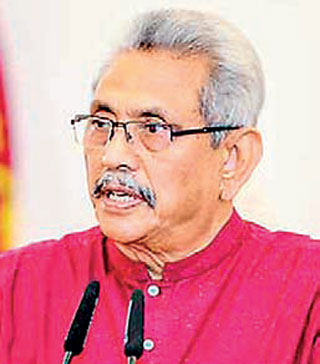
President Gotabaya Rajapaksa
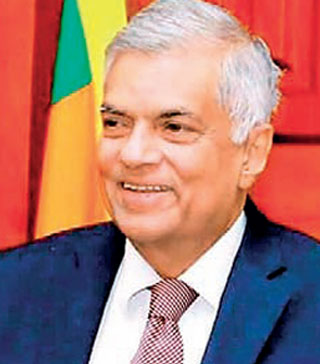
Prime Minister Ranil Wickremesinghe
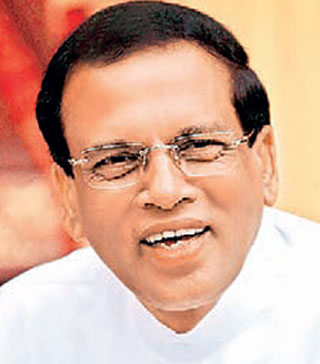
Former President Maithripala Sirisena
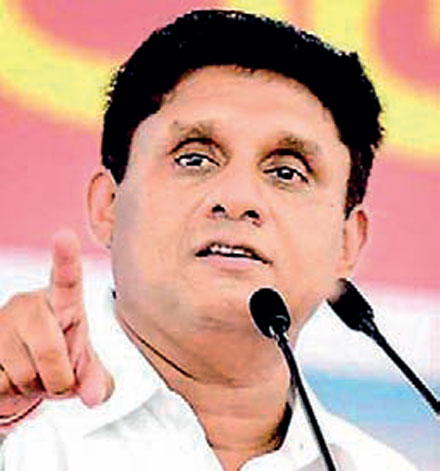
Opposition Leader Sajith Premadasa

JVP Leader Anura Kumara Dissanayake
 Going by the latest report of the respected Verite Research, the incumbent administration enjoys 3% support nationally. No administration comes back from that. This drop is not only vertical but its rate is accelerating: 59% to 10% in two years, and from 10% to 3% in six months. How long before it hits Ground Zero?
Going by the latest report of the respected Verite Research, the incumbent administration enjoys 3% support nationally. No administration comes back from that. This drop is not only vertical but its rate is accelerating: 59% to 10% in two years, and from 10% to 3% in six months. How long before it hits Ground Zero?
The Camus question
It was Albert Camus, writer, anti-fascist Resistance activist and thinker, not a philosopher by profession, who nonetheless made a breakthrough in the field of philosophy. He opens The Myth of Sisyphus with an extraordinary statement of luminous lucidity:
“There is but one truly serious philosophical problem and that is suicide. Judging whether life is or not worth living amounts to answering the fundamental question of philosophy. All the rest—whether or not the world has three dimensions, whether the mind has nine or twelve categories—comes afterwards.” (Camus, The Myth of Sisyphus, Penguin 1955, p 11.)
Similarly, “there is but one truly serious” political problem in Sri Lanka, which constitutes “the fundamental question” of Sri Lankan politics. It is not the debate over a Presidential or Parliamentary system. Nor is it the debate over a federal versus a unitary state. And it is certainly not whether the SJB or JVP will or should form the next government.
The “one truly serious” political problem in Sri Lanka is how a regime with a microscopic 3% popularity rate, down from a meagre 10% in January, remains in office without being removed by 97% of the people, despite the fact that Sri Lanka is suffering from the worst ever economic crisis in its history since 1948—and that crisis is nationally and globally recognised as ‘man-made’?
Thus the “fundamental question” is how, why, and for how long, the man who made the man-made crisis remains in office and how he can be democratically removed in the shortest possible time as the prerequisite for global rebranding, economic survival and revival.
 Strategic shortfall
Strategic shortfall
In my previous column I identified the main reason for the survival of the 3% regime as the split in the Opposition. In this column I list two more. If the regime is to be changed, three things have to be changed:
1.The lack of unity and cohesion in the Opposition; the split between the street (JVP-NPP, FSP-IUSF) and the Parliament (SJB, SLFP).
2.The limitation of the anti-regime struggle to the southern two-thirds of the island.
3.The non-encouragement by the main Opposition of revolt in the ranks of the ruling party.
The Opposition has a structure which is primarily bipolar – SJB, JVP—but effectively tripolar—SJB, SLFP, JVP. A tripolar political relationship, a trilateral equation, is an urgent strategic imperative.
It was exceedingly heartening to see the news and photographs of the ‘Sajith-Sirisena’ session, that between the Opposition and SJB Leader and the former President and leader of the SLFP, followed by a parliamentary meeting of the Opposition parties—from which the JVP regrettably absented itself.
Ex-President Sirisena had been ignored or trashed and rejected by the main Opposition for too long. A vastly experienced grassroots politician and ex-President who was canny enough to broker a deal with the SLPP and get himself and his guys re-elected, and smartly seceded from the SLPP later, has a slice of real-estate in Parliament, is in possession of an old brand-name, and has good relations with China-India-Russia, cannot be disregarded by anyone sensible enough to recognise a player at the table. One hopes the meetings didn’t put the economic reform cart before the political retrenchment horse, and focused instead on the removal, preceded by legislative containment and constriction, of the Gotabaya autocracy. No Aid Consortium will produce economic and financial support as long as Gotabaya Rajapaksa leads Sri Lanka.
The SJB, JVP and SLFP have many differences of political identity but a single commonality of interest—the speediest possible exit of President Gotabaya Rajapaksa. But where is the expression of that commonality, in terms of a joint declaration, joint action in Parliament or coordinated campaign commencing with a joint platform?
The SJB and JVP, led by younger personalities, assume that each will be the exclusive beneficiary of the collapse/ouster/defeat of the regime and are investing far more effort in unilaterally positioning themselves than in cooperating and coordinating with each other and the SLFP to shorten the political life-span of the regime and the agony of the people.
Is the SJB ready to renew the bipartisan equation with Sirisena and the SLFP so as to build a coalition of moderate progressives and a viable political centre? Or does it still identify with and defend the polarising policies of the Wickremesinghe-Samaraweera UNP, and regard a stabilising centrist coalition with Sirisena’s SLFP as off the table?
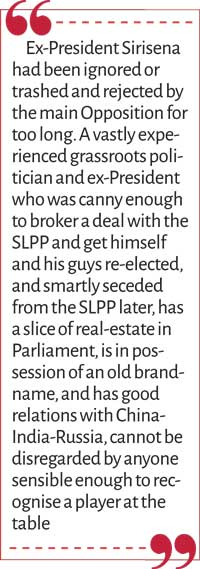 SJB’s soul
SJB’s soul
The main Opposition, the SJB, has an unresolved identity crisis—as does the JVP. It is not sure whether it is a new, populist party which seeks to occupy the ‘social democratic’ progressive centre and build new coalitions, social and political (as did S.W.R.D. Bandaranaike 1951-’55, before the horrific Sinhala Only), or whether it is the reincarnation of the centre-right, liberal-conservative UNP.
Here too the SJB has another identity crisis, making that four, not just two contending choices. If it is a reincarnation of the UNP, which UNP is it?
Is it the UNP of the years of Premadasa policies during which it won every election in the political system and held power at all levels; an achievement never to be repeated for 30 years and counting?
Or is it the UNP of Ranil Wickremesinghe which never won an election endowing it with national leadership, leadership of the country?
In his last May Day speech in 1992, President Premadasa proudly claimed that had SWRD Bandaranaike been alive he would have been with the UNP on that platform at Galle Face Green because he [Premadasa] had transformed the UNP into the kind of party SWRD would have comfortably stayed in, not broken away from. But is the SJB that UNP? Or is it the cosmopolitan-neoliberal minoritarian UNP of the administrations of 2001-2003 and 2015-2019?
Balanced reform or shock therapy?
SJB leader Sajith Premadasa (and the party’s dynamic trade-union personality Ananda Palitha) signalled the protection of State-Owned Enterprises (SOEs) in specific instances involving strategic assets at the commanding heights of the economy. However, the SJB’s liberal economic rightwing has taken aim at SOEs across the board, signalling total privatisation and/or foreignisation.
This latter stance is both insensitive and ignorant. Insensitive, because it drives the SJB and JVP further apart, sets an SJB administration on a collision course with the JVP-led trade unions, and guarantees socio-political polarisation and volatility.
Ignorant, because it ignores President Premadasa’s policy of rationalising and streamlining, not dismantling, the state sector. In place of the privatisation and foreignisation of ownership, he introduced renewable 5-year management contracts for the Sri Lankan private sector to reverse the unprofitability of the tea estates acquired by the state.
It further demonstrates ignorance of Premadasa’s formula of ‘people-isation’ for state-sector reform. In his final May Day speech (1992) he spent quite some time (several paragraphs in print) explaining precisely how ‘peopleisation’ was no synonym for ‘privatisation’ but an incentive to secure worker buy-in and consensus for increased productivity and profits through generous stake-holding.
The state-nihilism of the SJB’s rightwing economists results from their ideological constructs. They view the state and private sectors as the only types of ownership and as constituting a zero-sum game, in which the state sector is stereotyped as a deadweight. In contrast, at the zenith of statism, Ranasinghe Premadasa called not for all-out privatisation but for breaking up monopolies through a pluralist economic structure comprising four sectors: “state, private, cooperative and a joint sector”. (R. Premadasa, ‘A Plan for Sri Lanka’, Rotary Club Colombo West speech, April 4th 1973.)
If the SJB’s economic point of departure is 2015-2019, it inherits the twin burdens of culpability for the $ 12 billion borrowing from the private international money-markets with little to show for it, and the 2017 tampering with the Exchange Control Act, which FSP Education Secretary Pubudu Jagoda brilliantly argues, enabled the paradoxical foreign exchange outflow (drain) of export earnings and the consequent ‘dollar bankruptcy’ currently wrecking the country.
As for the full five-year period for economic recovery that the SJB’s orthodox economic experts insist upon, one is reminded of a remark of President Premadasa, typical of his successful economic philosophy:
“Poverty…has reached epidemic proportions…Epidemics are emergencies. Emergencies do not have the luxury of leisurely solutions.”
(President Premadasa, Inauguration of the Janasaviya Trust Fund, BMICH, May 25th, 1991.)
During the intersection of two civil wars and a foreign military presence, President Premadasa appointed me Director Conflict Studies at the Institute of Policy Studies. I was half my current age. My paycheck was from Premadasa’s own Ministry of Policy Planning and Implementation. Viewing policy through the prism of its potential for de-stabilisation and conflict, I’d emphasise that economic reform during crisis and social upheaval requires balancing on a tight-rope, or juggling while log-rolling, not rushing into a minefield. I’d feel far safer with the domain of economic adjustment and structural reform (especially state sector reform) in the hands of centrists and moderate progressives like Maithripala Sirisena, Dullas Alahapperuma, Dayasiri Jayasekara, Susil Premjayanth, Anura Yapa, Charitha Herath and Nalaka Godahewa, than the SJB’s ‘Shock Therapy’ advocates.
Neither a single-party government nor a National Government can administer economic shock therapy and survive any more than either the bipartisan Yahapalanaya administration or the UNP could survive the political shock therapy of a non-unitary Constitution and the Geneva 2015 co-sponsorship.
 Two cheers for AKD-JVP-NPP
Two cheers for AKD-JVP-NPP
Two cheers but not three for Anura Kumara Dissanayake and the JVP-NPP. In his pivotal Ambalantota speech, repeated superbly in Parliament on 5 July (crushing the PM’s ridicule) AKD displayed fire in the belly and cool tactical flexibility in the head, articulating:
(a) The readiness and ability to fight in the streets for and with the people.
(b) The readiness to participate constructively; to shoulder responsibility as PM if conferred –together with his choice of Cabinet—by Parliament; to alleviate the worst of the people’s suffering in six months.
(c) The insistence on a Parliamentary election within 6 months of taking-over as PM, as the only pathway for the legitimacy required for reform.
However, AKD deserves only two cheers and not yet three, because of a strategic choice that undermines his admirable articulation.
74-year curse or Gota curse?
That is the thematic slogan emblazoned on the huge banner behind which the JVP-NPP leaders march: “End the 74 Year Curse”.
A left party may entertain many ambitious long-range objectives but they are each turned into thematic slogans only at distinct though inter-linked stages and phases of an uninterrupted struggle.
Political rationality and logic should dictate that the JVP-NPP’s slogan in the current anti-autocrat stage should focus on “The Gotabaya Curse”, as the citizenry experiences and expresses it.
The denunciation of “74 years”, i.e., the whole of post-Independence history, is relevant only if the JVP’s message is not anti-autocrat, progressive-reformist and for a democratic republic, but is consciously anti-capitalist. “74 Years” is the JVP-NPP’s equivalent of the FSP-IUSF’s “overthrow the System”.
Imagine the absurdity if the anti-fascist Communists had not focused on Hitler’s Nazi-fascism and instead targeted him AND the previous 74 years or 50 years of German capitalism?
The adoption of the “74-year curse” slogan means that the JVP-NPP is willing to risk forfeiture of the support of those who have a different political affiliation and a positive evaluation of this or that period, government, leader, or development/welfare program over 74 years.
The JVP-NPP and FSP-IUSF are the vanguards and driving forces of the anti-Gota struggle but there is a logical contradiction between, on the one hand, the “74 Year Curse” and “overthrow the System”, and on the other hand, “the Gota Curse”. Their main slogans prevent the JVP-NPP and FSP-IUSF from winning over the maximum support from among the 97% and helps the Gota administration with 3%, to stay in office.
 Northern subtraction
Northern subtraction
The second factor keeping the 3% regime afloat is the strategic schism between north and south. The south is in struggle, the north is not. It is not that the north is incapable of mass struggle. The P2P ‘Long March’ is evidence of that capacity.
Northern self-subtraction from this struggle means the south will owe the north and east little or nothing when it eventually topples Gota rule.
Will it be the 97% that topples him or the 75% of the 75% which swept him into office that sweeps him out?
Discouraging rebellion
A revolt in the SLPP which pulls the rug from under the Gotabaya presidency will be the fastest way of ending it. Instead, the SJB and JVP are fixated upon a parliamentary election and winning it, which begs the questions of (a) how to secure an early election and (b) the purpose of winning it if Gotabaya is still in office with his 20th Amendment untouched.
The President can dissolve Parliament at the earliest in February-March 2023. That’s a long way off, and he may not exercise that prerogative.
The silver bullet is 113 votes, which the SJB-TNA doesn’t have. It takes an SLPP rebellion.
Turn 22A into 22 Plus
The 22nd Amendment presented by Justice Minister Wijeyadasa Rajapakshe on behalf of the Government provides a half-chance for change.
The CPA has condemned 22A out of hand as not measuring up to the 19th Amendment. The father of the 19th Amendment, ex-President Sirisena does not advocate its return in its pristine form because it had a dysfunctional aspect which contributed to the backlash which generated the two-thirds majority and the autocratic 20th Amendment. Realistically therefore, 22A cannot be 19A Plus or even 19A Classic in all respects.
The current choice is not between 22A and 19A, or 22A and 17A, still less between 22A and the abolition of the executive presidency. It is between 22A and the existing draconian 20A. Thus, the only real questions are: on balance, is 22A an improvement on 20A and can it be rectified/improved even marginally—tweaked—through amendments?
Tweaking would require all tendencies of the Opposition – the SJB, JVP, SLFP, 10 parties, TNA—to converge, and link-up with the SLPP reformists, isolating the pro-Gota/pro-Rajapaksa Clan/pro-20A hardliners. Such tactical interface could evolve into a tangential ensemble which flips the regime and leads on to a strategic realignment which can ensure stability and sustain structural economic reform.
The best choice is to make lemonade by squeezing the 22A lemon.
If the Opposition pushes for ‘22Plus’ while settling for the broadest achievable consensus, it would keep open the option of the abolition of the executive presidency (which I urge against) after an explicit mandate is obtained at the parliamentary election, as in 1977.
That prospect alone should encourage the Opposition to opt for incrementalism-gradualism right now, in place of rejectionism/abstentionism which keeps a fully-loaded 20A in Gota’s grasp.